Menu
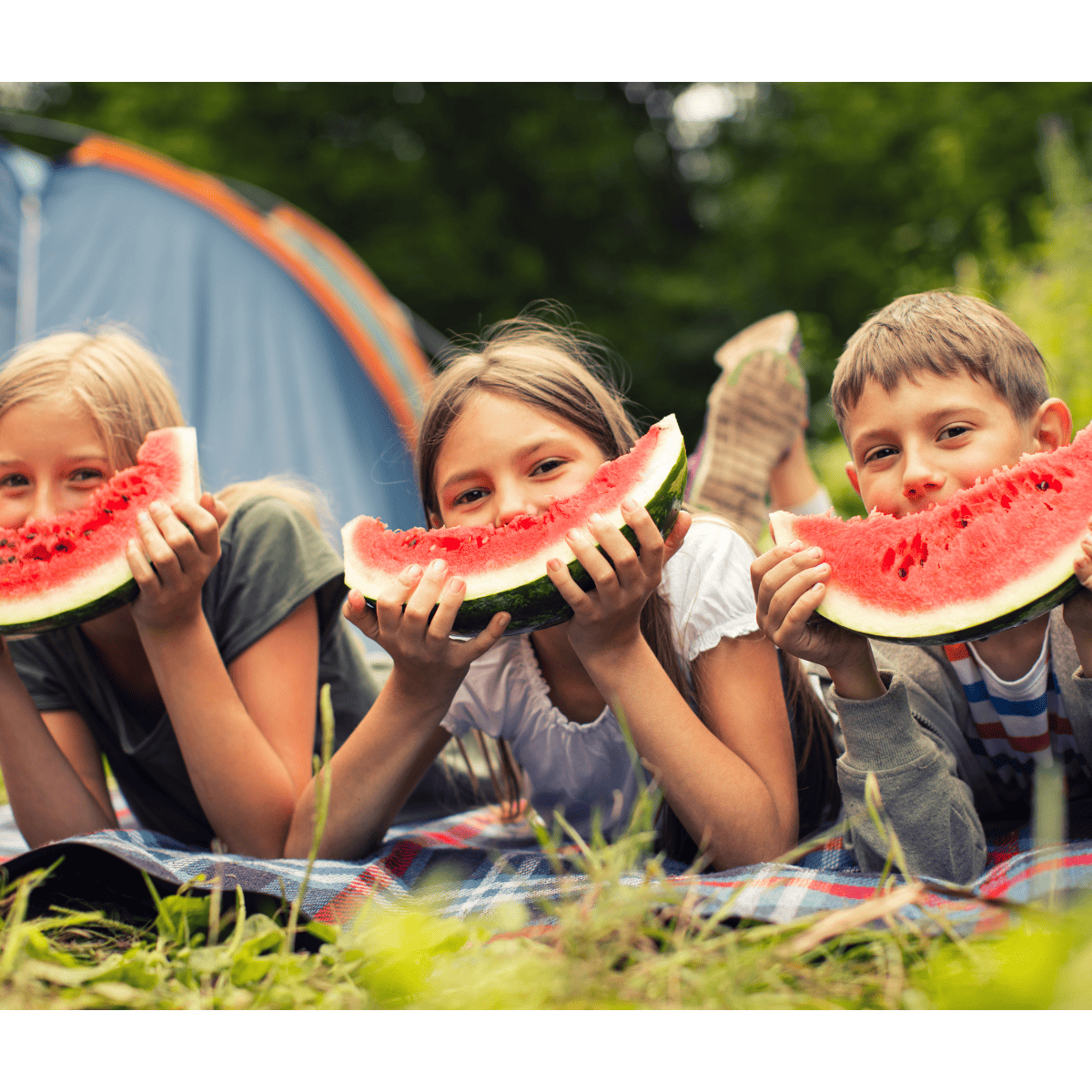
Fruit is always a hot topic in the nutrition world, especially when it comes to kids. It’s often way more well-liked and accepted than its vegetable counterparts- and for good reason, right? Kids are wired to prefer sweet foods, which can make fruit an early favorite pretty much as soon as they start eating. I think my kids have been eating $20 of berries every week since they started solids.
But the conversation about fruit isn’t so cut and dry. In fact, you’ve probably heard the discussion about fruit loaded with conflicting messages:
Fruit is bad!
No, it’s good!
Fruit has too much sugar. Especially bananas! We should limit it.
Fruit is super healthy! Serve it as often as you want!
Fruit makes them have diarrhea!
Fruit helps keep them regular!
So what’s the truth about fruit, especially for kids?
In this post, you’ll get answers to questions like, “how much is too much?” and, “how often should I serve fruit?” Plus, everything you need to know about fresh, dried, and freeze-dried fruit, the different nutrient contents of popular fruits, and some functional properties (read also: benefits!) of eating fruit!
This post contains affiliate links. As an Amazon affiliate, I earn from qualifying purchases at no extra cost to you.
For babies starting solids, the goal is to introduce them to a wide variety of foods. At their meals, you should serve another food group alongside fruit. For example, you might serve a 6-month old a raspberry or two at breakfast, with some oatmeal. You could puree the fruit and mix it into the oatmeal, too.
For more specifics on starting solids, download the free Simply Solids Guide here!
For ages 1-3, the USDA recommendation is about one cup of fruit per day. If you get out your measuring cup to measure, you can see that’s about a large handful. Now, this can (and probably will/should) be split up across multiple servings in a day—maybe 2-3 servings, ideally.
For ages 4-8, the USDA recommendation goes up to about 1.5 cups a day. This number is also equivalent to the recommended vegetable intake per day. That can help you visualize what meals and snacks might look like to reach those targets.
For more specifics on what a toddler’s daily diet should include, read this post
Unfortunately, yes, there is such a thing as too much fruit.
It’s true that too much fruit can cause an imbalance in the gut that can lead to tummy troubles. Fruit contains a natural sugar called fructose, that when consumed in TOO high of a quantity, can be a catalyst for diarrhea.
Fruit is also wonderfully fibrous. And we love it for that! But consuming too much fiber too fast can also contribute to other uncomfortable GI symptoms like bloating.
So while fruit is not to be feared, get a feel for how much is too much for YOUR child. I can’t give an exact amount because each child will tolerate it slightly differently.
Anytime, really!
Fruit is so versatile it can be part of breakfast, lunch, dinner, dessert, or any snack. I love using it to serve desserts that are higher in nutrition than traditional treats like cookies. And I used to think fruit at dinnertime was weird, or out of place. But now I see serving it at dinner helps my kids get enough each day!
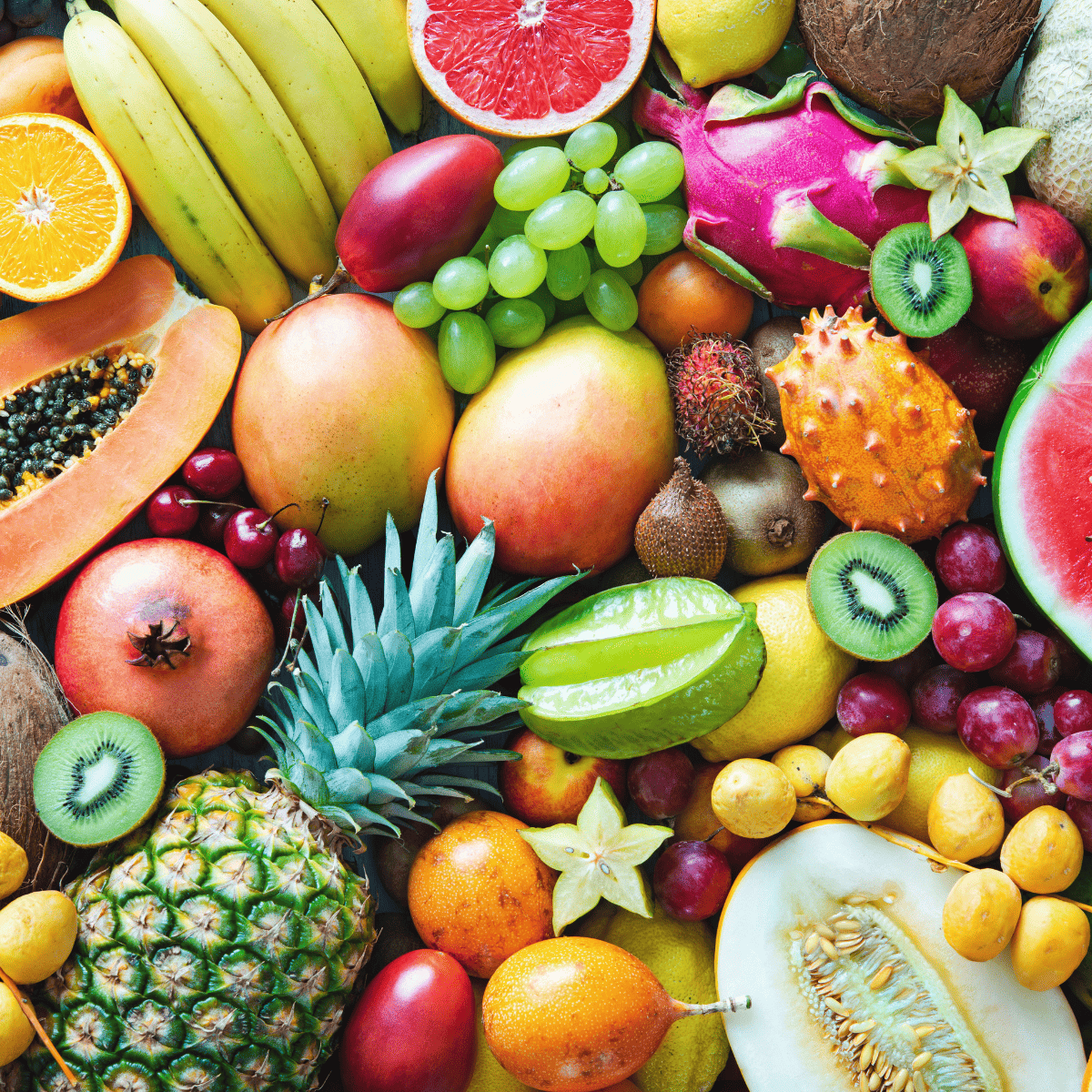
Fruit smoothies for kids are one of my favorite ways to get in a ton of nutrients right off the bat in the morning.
What are the healthiest fruits to put in a smoothie? In my opinion, you can’t go wrong. Smoothies are so versatile and you can find a way to use pretty much any fruit you like.
Check out my Smoothie Starter Pack to load up on all the essentials for making awesome smoothies at home. All of these items are on the Smoothie Supplies list in my Amazon Storefront!
Smoothies aren’t the only way that fruits can feature in the morning. A simple side of fruit is a great option! Or throw some fresh or frozen blueberries into your Saturday morning pancakes!
I like to serve fruits at breakfast that are harder to pack for my kids’ lunches. Like apple or banana slices (because they’ll brown in a lunchbox). I also like serving sliced pear, kiwi, raspberries, strawberries, honeydew, and cantaloupe at breakfast.
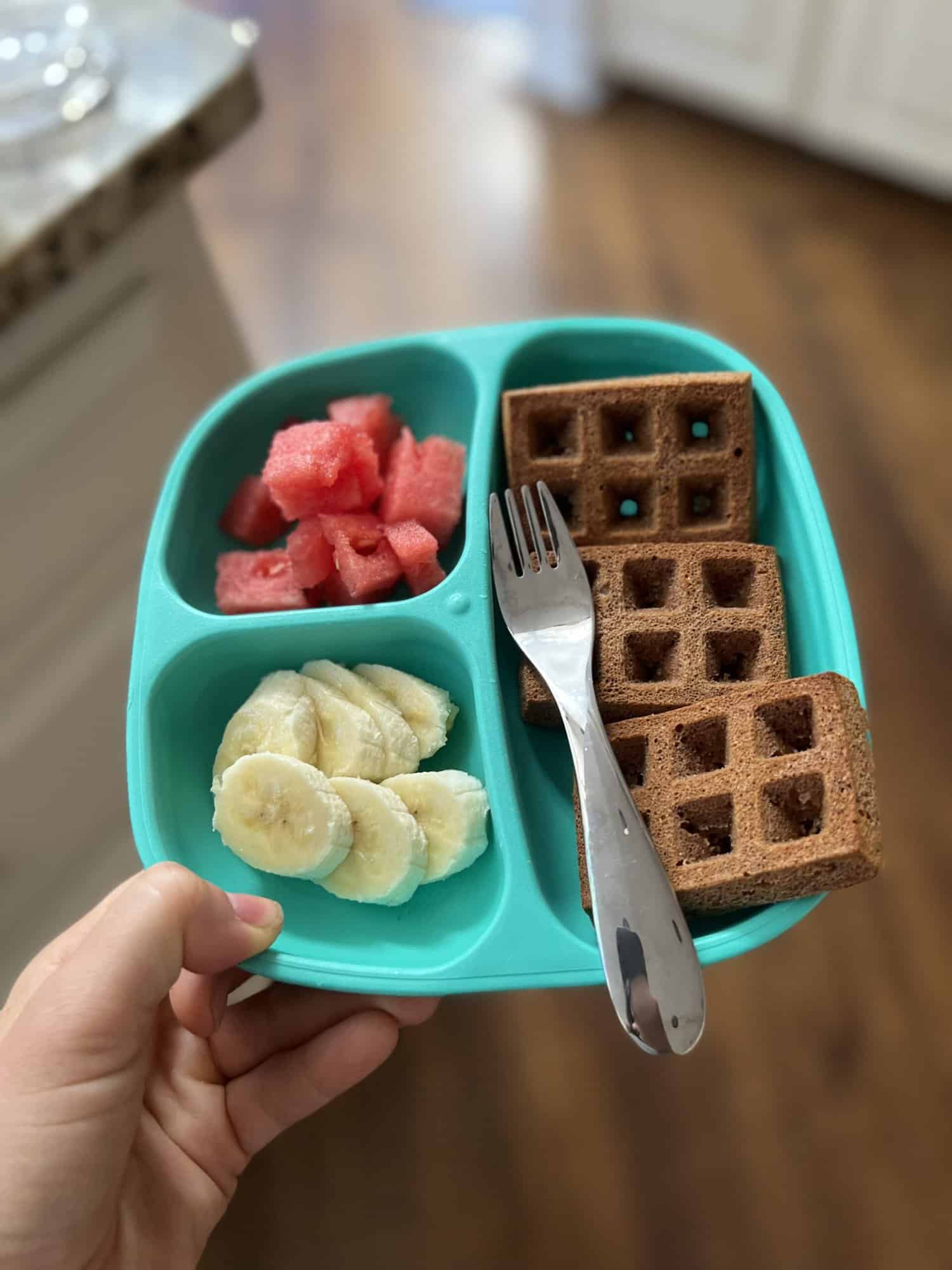
If your child isn’t a fan of whole fruit yet, start by serving tastes of fruit flavored things. For example, a strawberry flavored yogurt or a homemade popsicle (we love these strawberry Greek yogurt popsicles that can totally be eaten for breakfast!) Here are the popsicle molds we use!
Get 18 healthy toddler breakfast ideas here
I love to serve fruit for a snack! Fruit is so refreshing (and hydrating) so it makes for a great kids snack. The fiber in fruit also helps keep them full.
Fruit is the main ingredient in many pre-packaged kids snacks like bars, fruit snack packs, and pouches. And we can’t forget the fruits pre-packed by nature and ready to throw in a diaper bag, pool bag, or lunchbox—bananas, oranges, apples and pears!
For non-packaged snacks, try fruit kabobs, fresh fruit salads, or just plain old fruit trays. I try to put out fruit whenever my kids have playdates after school, and it always gets demolished.
I also like these Wyman fruit cups—which feel a little like Dippin’ Dots! They can make fruit fun for kids who don’t otherwise love it.
Fruit has a lot of great attributes, but it doesn’t contribute much protein or fat. So eating fruit alone may leave your kid feeling unsatisfied, depending on their hunger level. If you find that it doesn’t satisfy your kid for long, serve it alongside something else more filling and dense.
My favorite ways to do this are: Apples + nut butter, pears + yogurt dip, or just offering the fruit item alongside another item that has protein and fat—like a half a PB&J sandwich or some cheese.
Healthy & Balanced Protein Snacks for Kids

For lunch and dinner, you can pretty much serve fruit like you would any other side dish. Don’t worry, you don’t need to find a way to weave it into the main dish. A side of blueberries or half a sliced apple do the same job.
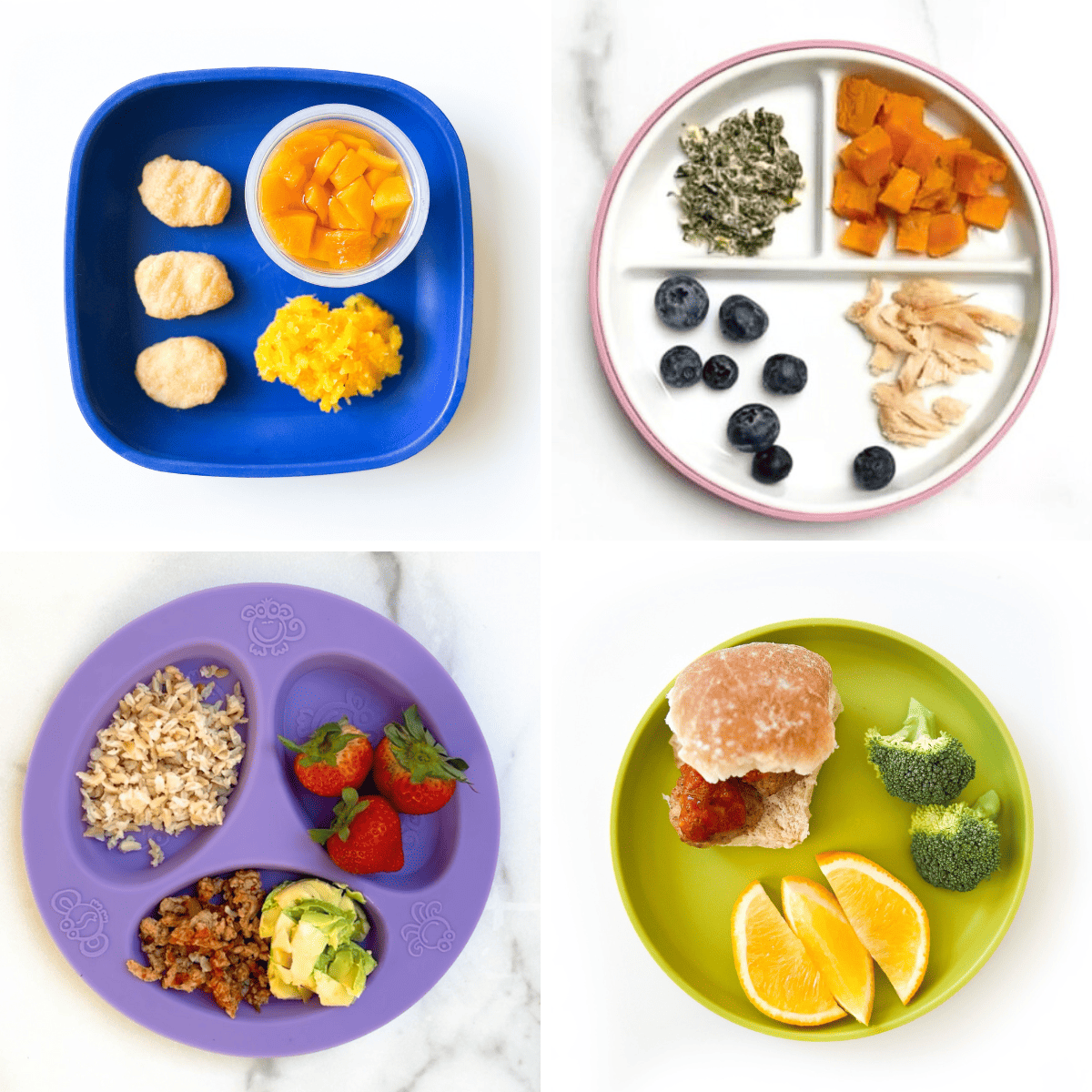
And while I included smoothies in the breakfast section, you’re more than welcome to serve a smoothie at any meal. You can change up the fruits, flavors, and add-ins, and it’s a great way to help meet all their nutritional needs.

A note on fruit as it gets later in the day:
While there’s no need to avoid fruit at dinner, you might want to be mindful of when to stop serving fruit as it gets closer to bedtime. Fruit contains natural sugar, and may not be the best choice for right before bedtime.

Do frozen fruits have less nutrients?
Does dehydrating fruit remove nutrients?
Is fresh fruit best?
I have good news—all of these preparations of fruit ARE nutritious.
So don’t worry if your kid only likes an alternate preparation of fruit. They’re getting a lot of great nutrition from those options, and while it’s maybe not the SAME as fresh fruit, they’re still reaping a lot of benefits from the fruit.
Frozen fruit has the same nutrition as fresh fruit. Nutrients are locked in when they’re frozen. So you’re getting the fruit in pretty much the same condition as fresh fruit—just able to be preserved longer! Frozen fruit can be fun to eat for kids that enjoy the texture. Frozen wild blueberries are yummy and tiny enough for toddlers to handle. For other frozen fruits, let them defrost slightly before serving so they’re easy enough to chew. It can be hard to pack for on the go or in lunches, but is a great choice for days at home.
Fresh fruit has the leg up on other preparations of fruit because it has the added benefit of being hydrating. Many fruits are composed mostly of water, and fresh fruit will have the highest water content of any preparations of fruit.
Dried fruit is a great option for on-the-go, being packed in lunches, or when you can’t temperature control fresh or frozen fruit. Drying the fruit does concentrate the sugar and some of the nutrients— which you can see from both sides. Dried fruit will have a higher sugar content than fresh fruit, but in many cases, may also have a higher concentration of vitamins/minerals. For example, dried apricots are a great source of iron, believe it or not!
To limit the sugar in dried fruit, primarily choose unsweetened ones, like raisins, mangos, and dates.
Freeze-dried obviously misses out on the hydrating element of fresh fruit. It also loses a little of the vitamin content (like vitamin C), but it still comes with plenty of benefits. Freeze-dried fruit still gives kids a good amount of vitamins and minerals, as well as fiber. Freeze-dried fruits also have a higher sugar content than fresh fruit due to the concentration of sugar during the freeze-drying.
Fruit cups are extremely convenient, and canned fruit usually has good prices. These options still contain good nutrition! You will miss out on some fiber, because the skin is peeled off fruits like peaches and pears before packaging.
The sugar can be higher, but you can minimize this by choosing fruit that’s packed in 100% juice or water. You can also drain out the liquid it comes in, if you’d like, before serving.
Bottom line: ALL these options are good options. I like to opt for fresh when possible just to maximize all of the fibrous and hydrating benefits that fruit has to offer. But it’s great to use the others as well- especially when you need the added convenience or if you have a picky eater!
You’re probably wondering if fruit juice ‘counts’ as fruit. And, well, I’m happy to report that it DOES count as a serving of fruit! ½ cup of 100% juice is equal to a ½ cup of fruit.
I prefer to serve juice sparingly because it lacks the fiber and satiety benefits of eating the whole form fruit. So you’re getting all the sugar and flavor, but not many other nutritional benefits. This is also true if you’re buying fresh squeezed juice or making it at home.
You can also see how the fruit servings add up quickly if your child drinks juice multiple times per day AND eats fruit.
If your child loves juice and you can’t quit cold turkey, start with diluting their juice with a couple ounces of water. They can still get the fruit flavor without having to consume quite so many ounces of juice. Or, trying adding some lemon to their water for flavor.
What about juice from concentrate? This means that the water has been removed to create a very concentrated juice liquid that gets reconstituted with water. It’s sometimes a more cost-effective way of processing, packing and transporting it. Juices from concentrate can also be okay to use, but some do have added sugar. So keep an eye on the nutrition label to make sure it’s only juice.
All fruit is packed with vitamins and minerals, imparts some hydration, and provides dietary fiber.
The most hydrating fruits are watermelon at 92% water content, strawberries at 91%, and cantaloupe at 90%. Many other fruits are in the high 80-90% range, meaning that you’re doing your body, organs, and skin a favor by reaching for fruit as a snack or side!
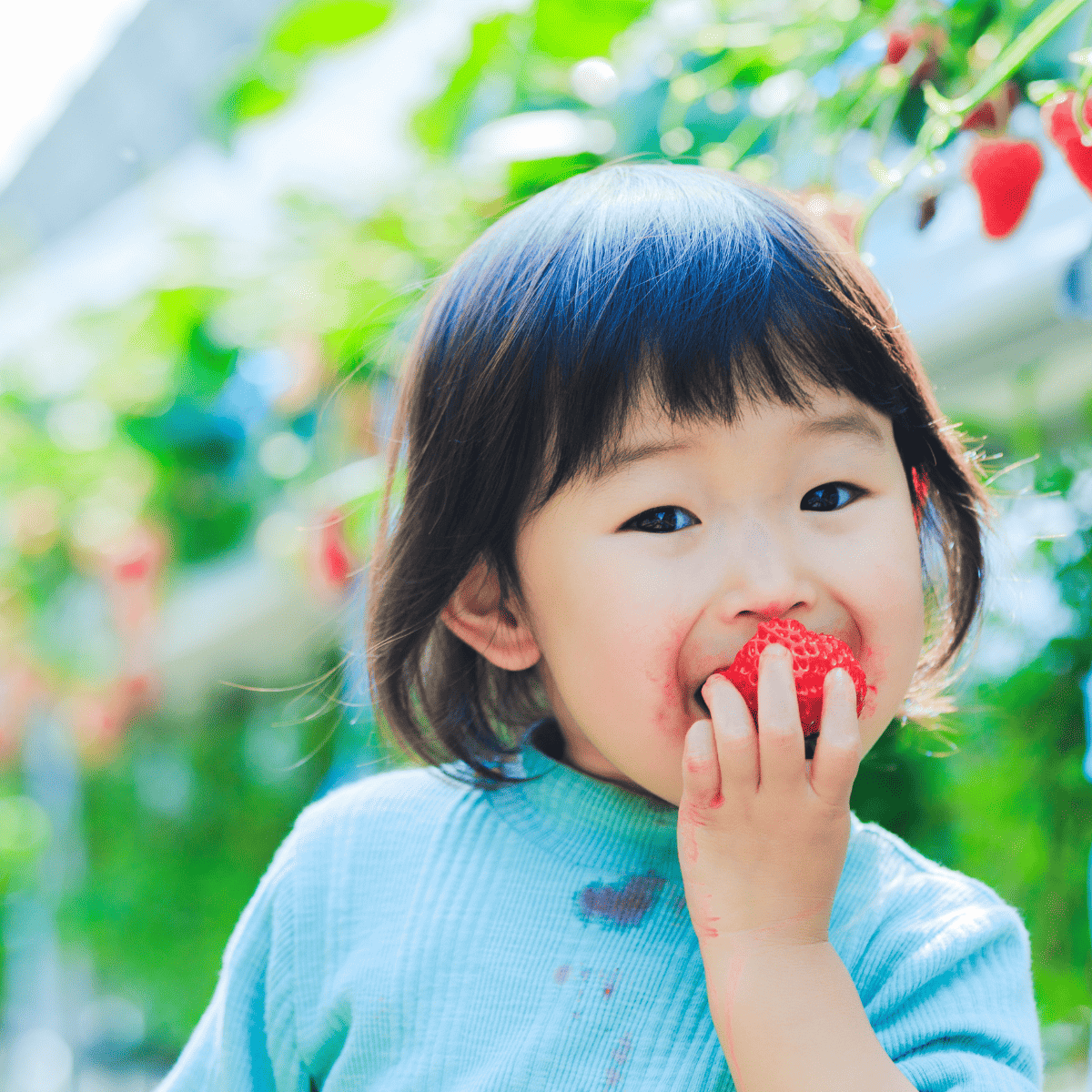
Among the most fibrous fruits are raspberries, pears, blackberries, and kiwi. Eating fruit with seeds and fruits with the skin on boosts the fiber content even more. Fiber has many benefits for kids and adults alike, including promoting gastric motility and regular bowel movements.
The sweetest fruits are mango, fig, grapes, and cherries. This doesn’t mean you can’t or shouldn’t serve these. We aren’t too worried about the natural sugar that comes in fruit. You just may want to be aware of the sugar content so that you’re able to offer balanced snacks and meals to help keep blood sugar levels consistent and regulated. AKA—don’t let your kids go wild on a bowl full of cherries, grapes, and mango all at once.
Everyone wants to know what are the most nutrient dense fruits.
This is a little bit of a tricky one to address, because all fruits are pretty nutrient dense, and assessing nutrient density kind of depends on what criteria you’re wanting it to meet. For example, some fruits are more calorically dense than others. And some fruits have the literal highest number of different nutrients in them (lemons have 17 different nutrients!).
Other fruits are powerhouses at providing particular nutrients—making them extraordinarily nutrient dense in providing that nutrient. For example, guava, kiwi, oranges, and strawberries are extremely dense in vitamin C.
So there may not be a clear cut answer for the ‘healthiest fruit,’ but you should rest easy knowing all fruits carry with them lots of nutritional benefits, as well as some OTHER benefits we’ll touch on next!
This is where it gets exciting. A relatively new field of research is emerging about what scientists are calling the functional benefits of foods.
This field looks at the benefits that food exerts ON TOP of just its nutritional value (like its calories, macro/micronutrients).
Fruits—and all plant foods—contain compounds called phytonutrients that assert beneficial effects on the body in various ways beyond the nutrition they provide. Many of the effects they produce in the body are thought to be disease-preventing or disease-fighting.
You may have heard of some of these phytonutrient compounds:
These are found in many plant foods we eat, like grains and vegetables, and certainly fruits. For example, blueberries have a high anthocyanin content, which is correlated with blood vessel health. Cantaloupe and apricots are loaded with beta-carotene, a carotenoid that has proposed benefits for the immune system, vision, skin, and bone health.
I say all this just to show you that food does more in our bodies than we think, or even know yet! So next time you’re worried because all your child ate at the meal was fruit, remember that they’re also reaping some functional benefits on top of the nutritional benefits! Fruit really is an amazing food!
We’ve debunked the myths about fruit being “bad for you.” And now you’ve got all the info you need to serve delicious, nutrition, fiber-full, hydrating goodness to your kids all year long.
If you want more healthy meal and snack tips and ideas, grab my Meal and Snack Survival Guide here! It will simplify meal and snack prep and planning and take some of the guess work out of feeding your family!
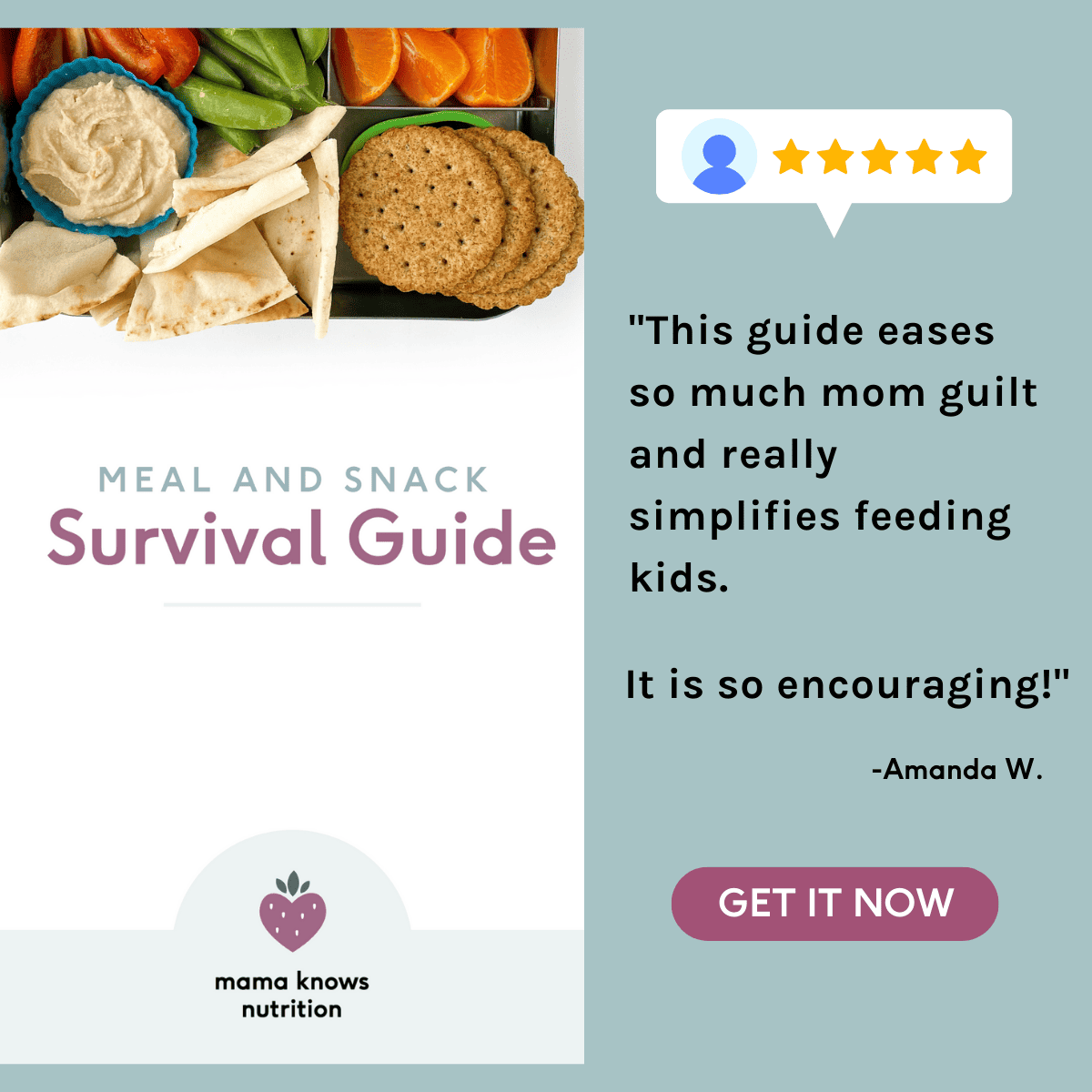

I’m a mom of two and a Registered Dietitian Nutritionist. I offer e-guides and e-books (go to my Shop page), workshops, brand partnerships, and nutrition counseling. Check out my blog for nutrition and feeding tips for your little ones.
This post may contain affiliate links. I may earn a commission. As an Amazon Associate I earn from qualifying purchases.
0 Comments